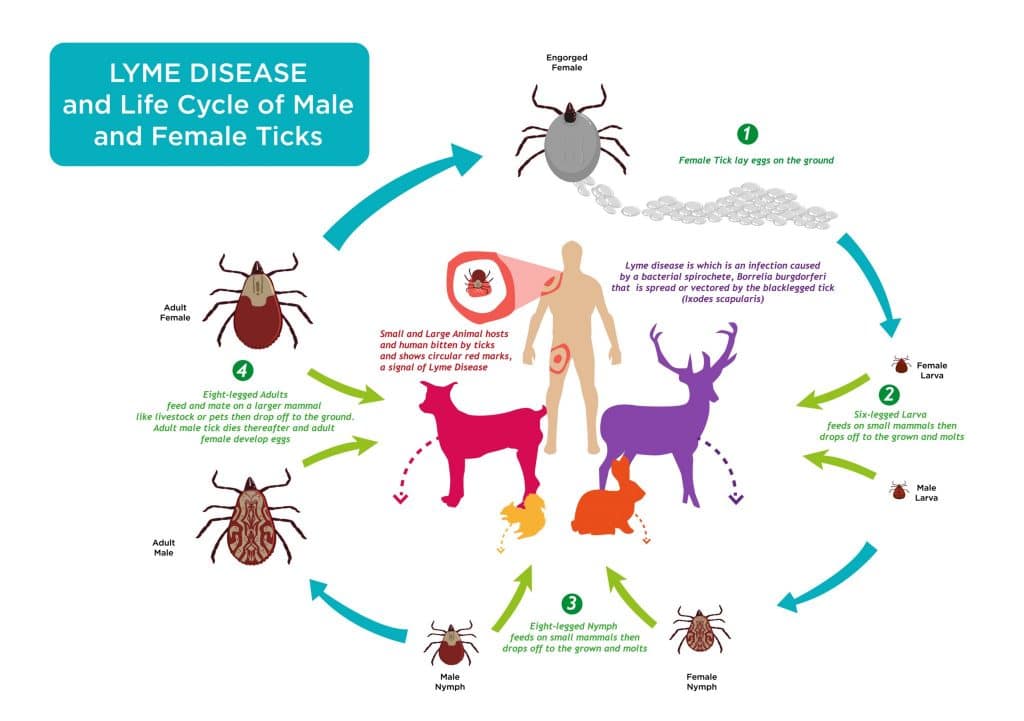Lyme disease and hair loss: is there a connection?
Lyme disease and hair loss can be connected
For starters, in this article, you can discover how Lyme Disease and hair loss may be related. Second, Lyme disease is a severe illness that can be hard to diagnose and can even cause hair loss. Moreover, its symptoms mimic those of other conditions, like ALS, hair loss, and multiple sclerosis (MS). (amongst many many others)
Also, Lyme disease and hair loss can be caused by the bite of a single, infected tick. It brings with it a list of horrifying symptoms and the road to recovery is long.
One of the symptoms of Lyme disease is hair loss.
 A Case Study of Lyme disease and hair loss (Alopecia)
A Case Study of Lyme disease and hair loss (Alopecia)
The American Journal of Dermatopathology recently outlined the case of a 21-year-old male who suffered a tick bite to the scalp. This case of Lyme disease leads to hair loss and non-scarring alopecia, which some refer to as spot baldness.
Non-scarring alopecia from a tick bite appears patchy and gives the scalp a “moth-eaten” appearance. Those who have it suffer lesions that are nodular and often blood crusted. Along with this, they experience pain, swelling and pruritus. Non-scarring alopecia is associated with tick bites; however, even if a tick bite was not reported; this condition shouldn’t be ruled out.
The image below demonstrates a real case of non-scarring alopecia. This case was made more complicated by the patient pulling out his hair. This was due to an additional condition called lichen simplex chronicus. With this condition, thick, brown, leathery, skin forms due to excessive scratching, caused by extreme itchiness.
Furthermore, there is still a lot to be learned about Lyme disease and hair loss. Besides, researchers believe that it happens when the body has a strong response to tick saliva, which causes the body to produce anticoagulant, anti-inflammatories, and immunomodulatory chemicals as a response.
The three stages of Lyme disease
Lyme disease has three distinct stages.
First, When a person is bitten, they are in the ‘early, localized’ stage. At this point, the disease has not spread throughout the body.
Next, the Lyme disease bacteria begins to spread throughout the body. This stage is known as the ‘early disseminated’ stage.
Lastly, the disease goes through the ‘late disseminated’ stage. This is the point at which Lyme disease has spread through the entire body.
Once Lyme becomes chronic, its bacteria hide from the immune system in the smallest of places, and it adapts and finds new ways to survive. To eliminate Lyme bacteria, we must open the biofilm where the host of bacteria hides, using special enzymes, plants, vitamin C, and other methods.
Are you at risk of Lyme disease?
Further, people who spend a lot of time outdoors are most at risk of getting Lyme disease. Moreover, Lyme is known to be persistent in specific regions, so it’s essential to find out if you live in or are travelling to an area known for Lyme disease.
Activities that expose you to Lyme disease
So, if you spend a lot of time in the outdoors, enjoying activities like gardening, hiking, hunting, etc. you could be at risk of being exposed to Lyme disease. This is especially true if you are in a region known as Lyme disease areas or walk through tall grass.
In addition, pets that spend a lot of time outside or play off the leash could carry ticks home on their bodies.
Pinpointing Lyme disease and why you have hair loss
Symptoms of early Lyme disease:
Fatigue
Headache
Rash
Fever
Sweats
Chills
Muscle Pain
Joint Pain
Neck Pain
Sleep issues
Symptoms of chronic Lyme disease
More fatigue
Joint Pain
Muscle Pain
Other pain
Sleep issues
Cognitive
Neuropathy
Depression
Heart-related
Headaches
Lyme disease and hair loss are difficult conditions to pinpoint and diagnose.
This is particularly the case if you never saw a tick or if you removed a tick and threw it away before it was assessed. Ticks are around the size of a pinhead, so they can be challenging to see and detect.
In its earliest stages, Lyme disease causes a rash in the area where the bite took place. You’re also likely to experience flu-like symptoms and joint pain. Down the road, symptoms like chronic arthritis and other neurological symptoms occur.
Lyme disease is a very misunderstood subject, find a Lyme-literate doctor to help you by your side.
Getting a precise diagnosis of Lyme disease can be challenging, and not all doctors will go the extra mile, or they don’t know. Lyme disease is a misunderstood subject. Therefore, you must do your homework and research Lyme illness yourself.
I understand that this goes against everything you believe about medical doctors, but with the time you will see that it is a fact. You are the only person that can and will bring about your healing.
Lyme disease without tick bites? Read my Story
Firstly, I suffered from Lyme disease, yet I was never bitten by a tick. After struggling for some time with thyroid and adrenal fatigue problems, I got to a point where I felt stuck again and was not moving forward with my health. Although my body temperature was back up to standard (37 degrees) and my adrenal glands and thyroid had improved significantly, I still felt exhausted.
I started to dig deeper, and it turned out that I had a few infections: Lyme disease, Borreliosis, and Epstein-Barr. I went to the United States for treatment at a detox clinic, which lasted three months. After the detox treatment, I continued to adapt to my health routine. I added ozone treatments and decided to move to a sunny and warmer country to improve my overall health and energy.
Don’t let doctors tell you it’s all in your head, dig deeper until you found the problem and the solution.
Doctors often sneer at complaints of fatigue. Usually, because they can’t find a precise diagnosis in their medical books, it sometimes gets written off as a psychosomatic illness (they’ll claim it’s that it’s all in your head). We’ve been conditioned to trust doctors and to respect their years of study, but even doctors make mistakes – they aren’t infallible.
Never give up and keep searching until you find a doctor that takes you seriously, and that cares enough to help you find solutions. In many ways, you’re facing a condition in which you must do your research – after all, it’s your body, not your doctor’s.
Ideally, they should listen to you and what you’re experiencing, believe you and then offer solutions. Remember, it’s in your best interests to insist on healing and answers. If your doctor isn’t as concerned about your well-being as you expect, move on and seek a second, third, fourth, even hundredth opinion!
New research on Lyme disease
Research is beginning to show that Lyme disease can be transmitted by other means than direct bites from ticks. It’s now believed that Lyme disease can be transmitted through sex, eating meat infected with Lyme disease, or from ticks that are so small that you cannot see them.
Be your health advocate while working with a doctor to cure Lyme disease.
Do your research as you are the sole creator of your healing process and don’t count solely on a doctor to solve your issues – they probably won’t.
I remember when I was very ill and exhausted, yet it was tough to get the support I needed from friends and family as most of them didn’t understand my condition.
It’s a very lonely process, and one that you must go through on your own, but never give up. Be a warrior.
If you would like to read about the 55 hair loss causes, please ensure to check out this link.
Or to get more information about optimal health and living a holistic lifestyle, click here.
Let me help you right now!
Receive YOUR Welcome Kit that includes a wide range of topics, from simple and easy healthy brain recipes to clean living, ditching toxic chemicals with loads of practical advice that you can implement immediately
.




